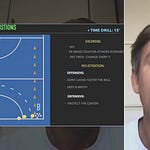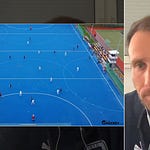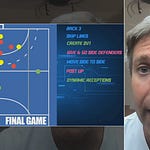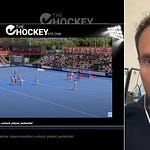Andrew Wilson is an English coach who has been coaching in Spain for most of his career. Andrew Wilson talked to us about his views on running with the ball and how to train your players to do this the right way. One of these basic skills that could do with some more attention.
The One Thing Every Field Hockey Coach Should Take Away
If there is a single message field hockey coaches must absorb from Andrew Wilson’s “Running With The Ball” masterclass, it’s this: The game is not just about passing. While we all acknowledge the passing game forms the backbone of how field hockey is played, we often default to teaching athletes to move the ball quickly, discouraging risk and creativity. Yet, Wilson convincingly dismantles the old trope of “Hockey is a passing game,” reminding us that running with the ball – and running with intent – is not only useful, but sometimes essential.
The key reason this matters is that the space a player creates when running with the ball can alter the balance of play, especially when attacking a compact circle, breaking defensive lines, or drawing defenders out wide before cutting in. Passing may not always be possible or optimal, and by denying athletes the opportunity to hone their running skills, coaches inadvertently limit their tactical options, player enjoyment, and overall team performance.
A central lesson is the need to design exercises and game-like scenarios where players must decide for themselves whether to run or pass. Wilson explains:
“The best way to coach people about running with the ball is to create open-ended exercises…where a player has the option to run or to pass with the ball,” adding, “We don’t want players who are machines. We want players who are able to read in split seconds what is happening around them and then to make decisions.”
This quote should sit with you as you map out your next week’s training.
Here’s how I recommend integrating this into your daily coaching:
Use Decision-Based Drills: Shift from rigid drills that prescribe passing to games where space opens up unpredictably, and reward players who rightly choose when to drive into open turf.
Encourage Confidence Through Mistakes: A culture of immediate criticism for “losing the ball when running” breeds tentative play. Foster an environment where errors when running at a defender are opportunities for learning.
Video Feedback: Use match footage or capture moments in scrimmages when running with the ball breaks a line or opens the game, so players—and coaches—can see the impact.
Don’t Build Automatons: Teach your athletes how to read defenders, reading cues for when to attack space and when to offload, rather than simply waiting for “the right” pass.
Wilson puts it succinctly:
“If they’re making mistakes, they’re learning. And I think that’s a big, big thing…your style of coach has everything to do with their confidence of those players.”
Adopting this principle doesn’t mean turning away from the passing ethos—it means broadening your tactical palette and enabling players to adapt, improvise, and attack more dynamically.
Why You’ll Want to Watch the Full Masterclass
There is a rich layer of detail in Wilson’s masterclass that goes far beyond this summary—a meticulous breakdown of patterns, practical clips from international play, and genuine insight into the balance between running and passing, all contextualised for coaches at every level. If you want to challenge your defensive structures, unlock new attacking options, and shape adaptable players, you owe it to yourself to review the full video and written analysis. The nuances provided—and the well-crafted examples—are invaluable for any coach who takes development and learning seriously.
Continue reading below (if you're a paid subscriber) for an in-depth dive into the three main takeaways from this session and direct coaching applications.Listen to this episode with a 7-day free trial
Subscribe to The Hockey Site to listen to this post and get 7 days of free access to the full post archives.













